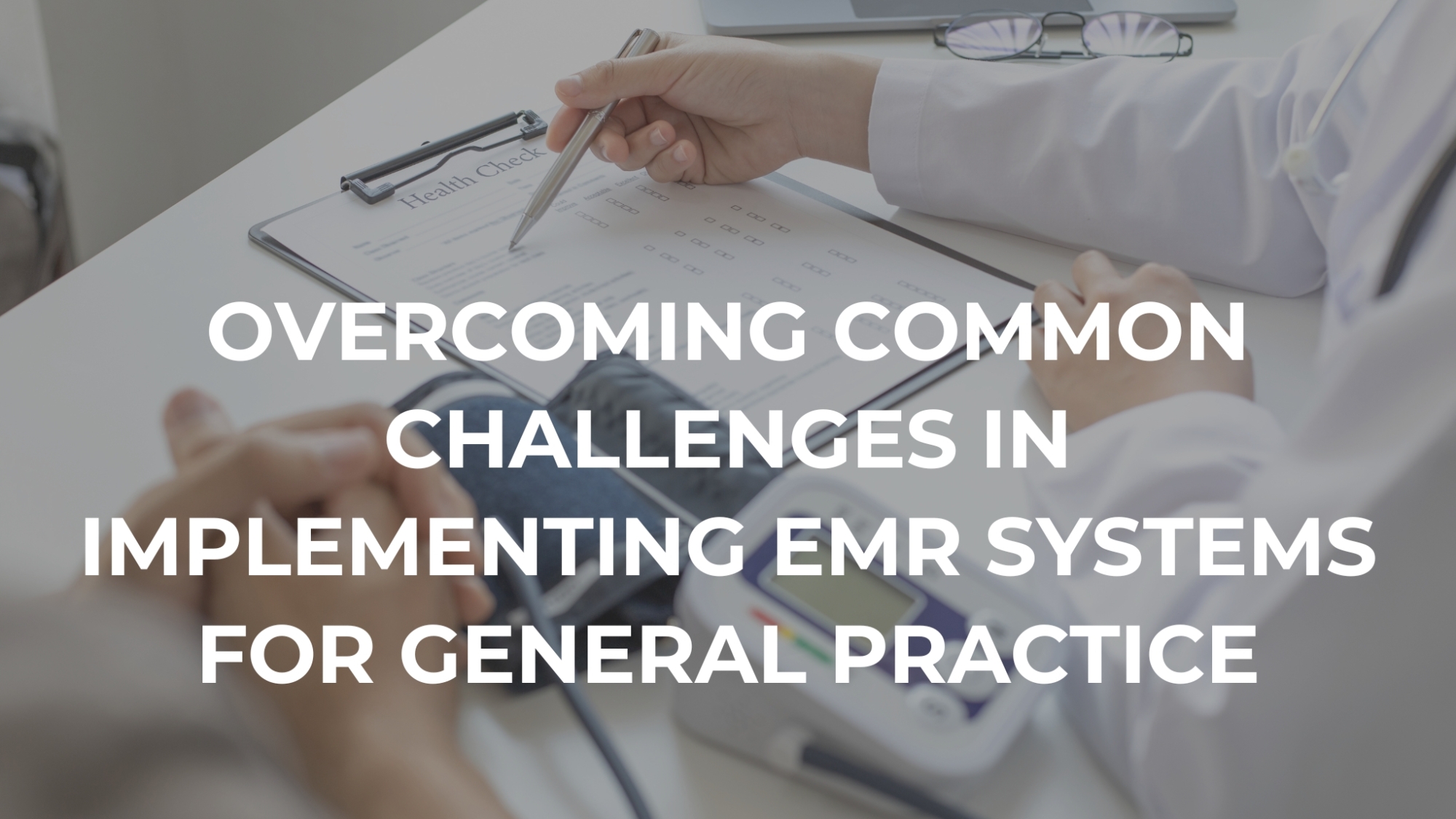The transition from paper charts to Electronic Medical Records (EMR) can feel like a daunting task for general practitioners (GPs). New workflows, data migration, and user adoption hurdles can create a whirlwind of challenges. But fear not! Here’s a roadmap to navigate these obstacles and ensure a smooth EMR implementation in your general practice.
Challenge #1: Cost Concerns and Budget Constraints
- Explore Cost-Effective Solutions: Not all EMR systems are created equal. Research systems with flexible pricing models that fit your practice size and budget. Consider cloud-based options that eliminate upfront hardware costs.
- Highlight Long-Term ROI: While upfront costs exist, EMRs offer significant long-term returns. Quantify potential savings from improved efficiency, reduced errors, and streamlined billing processes.
Challenge #2: Data Migration and System Integration
- Plan for a Smooth Transition: Partner with an EMR vendor that offers robust data migration services. Ensure they can securely convert your paper charts and integrate seamlessly with existing lab or imaging platforms.
- Phased Implementation: Consider a phased approach, migrating data in batches to minimize disruption and allow staff to acclimate to the new system gradually.
Challenge #3: User Resistance and Training Needs
- Embrace Comprehensive Training: Invest in comprehensive training for all staff members, from receptionists to physicians. Offer personalized training options like video tutorials or on-demand resources.
- Address Change Management: Acknowledge staff concerns and anxieties. Foster open communication and highlight the benefits of EMRs for improved patient care and workflow efficiency.
Challenge #4: Data Security and HIPAA Compliance
- Choose a Reputable Vendor: Select an EMR vendor with a proven track record of robust data security measures. Ensure their system is HIPAA compliant and offers ongoing security updates.
- Develop a Data Security Policy: Establish a clear data security policy within your practice, outlining staff responsibilities and protocols for handling sensitive patient information.
Challenge #5: Ongoing Support and System Optimization
- Choose a Vendor with Ongoing Support: Select an EMR vendor who offers ongoing technical support and user assistance. Look for readily available resources like online help desks or dedicated support teams.
- Regular System Reviews and Optimization: Conduct regular reviews to identify areas for improvement within the EMR system. Utilize feedback from staff to optimize workflows and functionalities for maximum efficiency.
Conclusion
The transition to EMRs can seem like a stormy sea, but with careful planning and the right tools, you can steer your general practice towards calmer waters. By acknowledging common challenges, implementing smart strategies, and prioritizing user adoption, you can transform your EMR system from a source of stress into a powerful asset.
Remember, a successful EMR implementation is a journey, not a destination. By planning strategically, addressing challenges proactively, and embracing ongoing support, GPs can navigate the initial hurdles and reap the long-term benefits of EMRs. A well-implemented EMR system becomes a valuable tool for improved patient care, streamlined workflows, and a thriving general practice.


